The Shipping Industry Embraces Battery Power
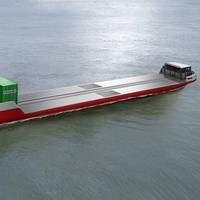
The past decade has seen tight restrictions on emissions from vessels, notably with a 2015 move to a .10% sulfur maximum in Emission Control Areas (ECA) in North America and in northern Europe. As the International Maritime Organization (IMO) now shapes shipping’s decarbonization future, shipowners are looking at transitions away from fossil fuels. Among the myriad of alternatives are lithium ion batteries and some early forays into hydrogen fuel cells.To date, large batteries are used on short runs…
Ammonia Fuel Cells for Deep-Sea Shipping: A Key Piece of the Zero-emissions Puzzle
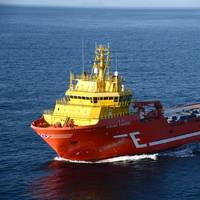
Interest in ammonia-powered fuel cells for the maritime sector is growing, but stakeholders have been hesitant to commit to investments in large-scale systems. Now the ShipFC project is aiming to secure a place for ammonia in the future of deep-sea shipping.The project will equip the offshore supply vessel Viking Energy, owned and operated by Eidesvik and on contract to energy major Equinor, with a 2-megawatt (MW) ammonia fuel cell, allowing it to operate for at least 3,000 hours annually on clean fuel.
Did You Know?: 47% of all Newbuild Dry Bulkers Sport Scrubbers

We have known it all along; the bigger the bunker fuel consumption of the ship, the more likely it is that shipowners will choose an SOx scrubber as the tool to comply with the IMO 2020 sulfur cap.Whiles only three Handysize bulkers in total have been delivered from the newbuilding yards with a scrubber fitted in 2020, one in three Handymax bulkers were delivered with scrubbers installed.Most scrubber-fitted bulkers were delivered in the Panamax sub-sector, that saw 81 units out of 150…
IMO2020: Low Sulfur Fuel Potential Pitfalls

(This is excerpted from Maritime Reporter & Engineering News' January 2020 "The Path to Zero" column.)Are the world’s ships’ engines ready for IMO compliant very low sulfur fuel? That’s a wide open question as ship owners step to the end of the preparatory gang-plank on January 1, 2020 when 0.5% very low sulfur distillate fuels (VLSF) have to replace residual heavy fuel oil (HFO) containing 3.5% sulfur.You might think that given the length of time to prepare – since 2008 – shipping experts and engineers would have a clearer picture about new fuels and marine engines and operability.
IMO 2020: U.S. Restricts the Use of Certain Fuels in Scrubber Vessels

With the January 1 implementation of IMO 2020, which requires dramatic reductions in the sulfur content of emissions from ocean-going vessels, the United States government issued a new rule that it asserts actually facilitates the distribution of compliant fuel.The US Environmental Protection Agency asserts that it is taking steps to allow for the distribution of distillate fuel with sulfur content of up to 5,000 ppm sulfur—something that it asserts was previously prohibited.
IMO2020: 4 Tips to Using Methanol as Fuel

Lessons learned on designing, building & operating with methanol as fuel.Generally averse to technological risk, maritime professionals lean on lessons learned, when available, to make future decisions. According to Fredrik Stübner, Director Ship Management, Marinvest, his organization’s experience running ships on methanol can be instructive for others considering emission reductions technologies, and to this end he suggests:1. VESSEL DESIGN“For other shipowners considering methanol as fuel…
IMO2020: Methanol Proves Promising
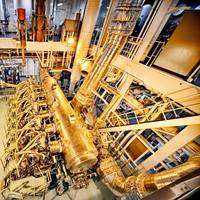
When the clock strikes midnight on December 31, 2019, the maritime world enters a bold new era of emission reduction. With its growing fleet of methanol fueled ship and more than 60,000 hours of operating experience under its belt, Waterfront Shipping Company has a five-year headstart.As a general rule, shipowners are remiss to share insights on their operations, lest their competitors catch wind and leverage the same technology and savings. The case of Waterfront Shipping Company Ltd.
BIMCO Offers Bunker Fuel Price Monitoring
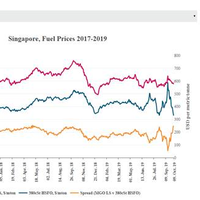
BIMCO has developed a monitoring service for bunker prices, with data provided by MABUX, which is now available to all BIMCO members. The new interactive graphs allow price fluctuations in the major bunkering hubs of Singapore and Rotterdam to be tracked. They will show the bunker prices for 380cST HSFO (high sulphur fuel oil) and MGO LS (marine gas oil low sulfur), both in USD per metric ton, as well as the spread between the two fuel types, with data available since June 2017.
Portable Emission Analyzer Certified for Marine
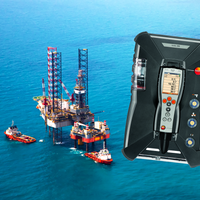
A portable analyzer designed for monitoring emissions from ships is now available for sale or rent from Ashtead Technology. “With increasing global efforts to limit ship emissions, and with new regulations to reduce sulphur dioxide emissions coming into force on January 1, 2020, the addition of the Testo 350 MARITIME instrument is perfectly timed,” says Ashtead’s Environmental Sales Manager, Josh Thomas.The Testo 350 MARITIME is the world’s first portable analyzer certified for…









